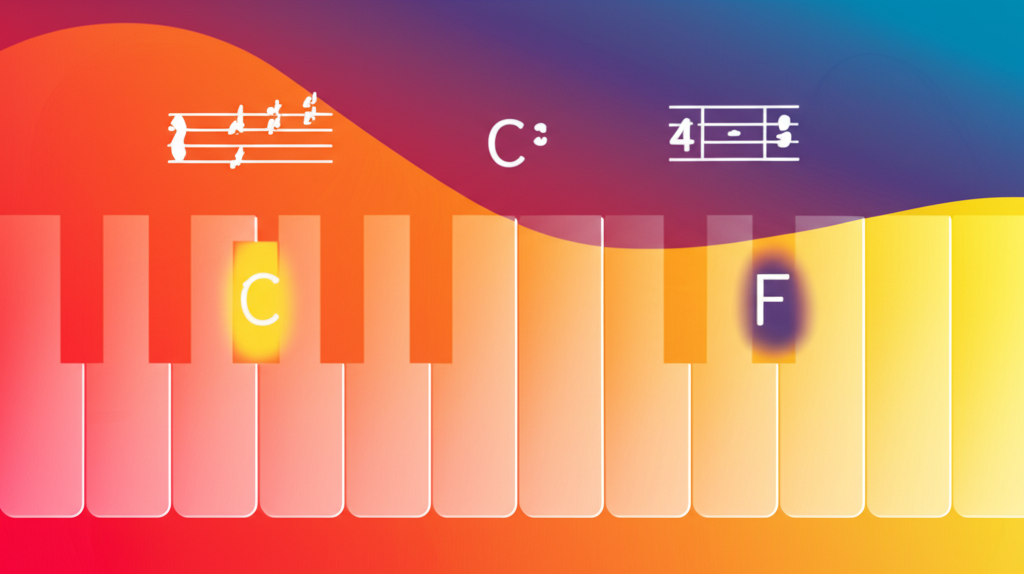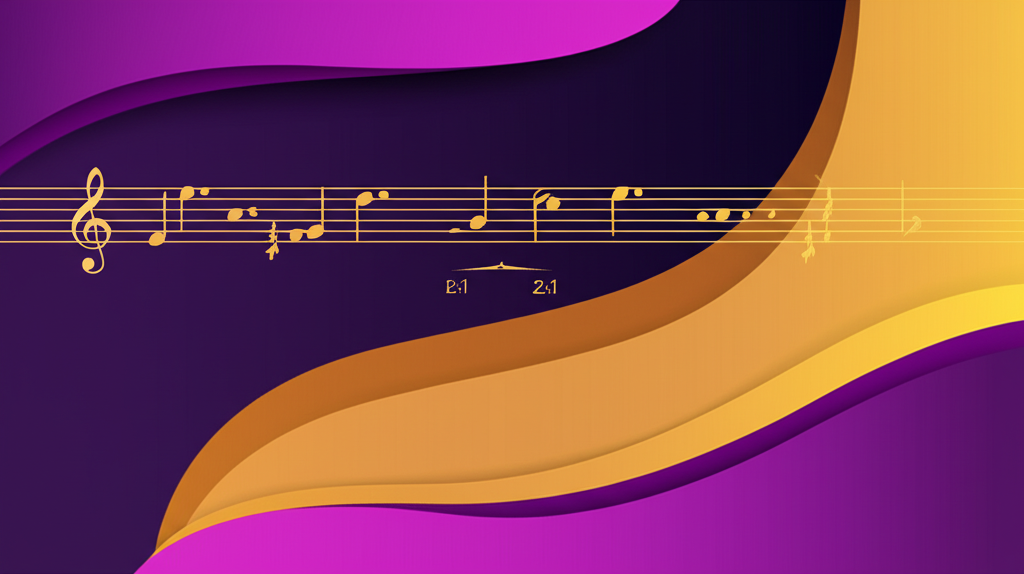
Major Sixth Interval: The Open and Expansive Sound

b4n1
June 14, 2025, 12:53 a.m.
Major Sixth Interval: The Open and Expansive Sound
Summary:
The major sixth interval, spanning nine semitones, creates an open, expansive, and optimistic sound that appears prominently in folk music, popular songs, and classical compositions. This interval provides a bright alternative to the melancholic minor sixth.
Keywords:
Major sixth, interval, expansive, optimistic, folk music, minor third inversion, open sound, melodic leap, harmonic color, compound interval.
Introduction:
The major sixth interval stands as one of the most recognizable and emotionally uplifting intervals in Western music. Spanning nine semitones (four and a half whole steps), it creates an open, expansive sound that suggests optimism, freedom, and wide-open spaces.
This interval appears frequently in folk songs, popular music, and classical compositions where composers want to create a sense of joy, expansion, or pastoral beauty. Its distinctive character makes it instantly recognizable to trained ears.
Structure and Measurement:
A major sixth interval consists of:
- Distance: 9 semitones (half steps)
- Alternative measurement: 4.5 whole steps
- Frequency ratio: 5:3 in just intonation
- Cents: 900 cents in equal temperament
Examples of Major Sixths:
C to A (9 semitones)
D to B (9 semitones)
E to C♯ (9 semitones)
F to D (9 semitones)
G to E (9 semitones)
Examples:
C to A Major Sixth:
Major Sixths in Melody:
Major Sixth Chord:
Notación musical:
Emotional Character:
The major sixth evokes specific emotional responses:
- Optimism: Creates feelings of hope and positivity
- Expansiveness: Suggests open spaces and freedom
- Joy: Often associated with happiness and celebration
- Pastoral beauty: Evokes countryside and natural settings
- Brightness: Adds luminosity to musical passages
Relationship to Minor Third:
The major sixth is the inversion of the minor third:
- Major sixth (9 semitones) + Minor third (3 semitones) = Octave (12 semitones)
- This creates an interesting emotional contrast
- The "sad" minor third becomes "happy" when inverted
- Voice leading often exploits this relationship
Famous Musical Examples:
The major sixth appears in many well-known melodies:
- "My Bonnie Lies Over the Ocean": Classic ascending major sixth
- "Nobody Knows the Trouble I've Seen": Descending major sixth
- "Take On Me": Features prominent major sixth leaps
- Classical works: Bach, Mozart, and Beethoven used it extensively
- Folk songs: Many traditional melodies feature major sixth intervals
Famous Major Sixth Opening:
Harmonic Applications:
Sixth Chords:
Major sixths are fundamental to sixth chord construction:
- Major sixth chords: Root, major third, perfect fifth, major sixth
- Minor sixth chords: Root, minor third, perfect fifth, major sixth
- Added sixth: Common in jazz and popular music
Voice Leading:
The major sixth provides smooth voice leading options and creates open, spacious harmonies.
Jazz and Popular Music:
In jazz and popular music, the major sixth serves important functions:
- Chord color: Adds brightness without excessive tension
- Melodic expression: Creates memorable, singable intervals
- Swing feel: Often used in jazz melodies for its open character
- Resolution target: Provides stable resolution from dissonant intervals
Folk and Traditional Music:
The major sixth has special significance in folk traditions:
- Celtic music: Frequently appears in Irish and Scottish melodies
- American folk: Common in traditional ballads and work songs
- Pastoral songs: Often used to evoke rural, outdoor settings
- Children's songs: Its bright character makes it suitable for young voices
Ear Training Recognition:
Developing major sixth recognition skills:
- Reference songs: "My Bonnie Lies Over the Ocean" for ascending major sixth
- Comparison method: Contrast with minor sixth and perfect fifth
- Scale context: Practice identifying within major scales
- Chord context: Listen for major sixths in sixth chord progressions
Major Sixth Recognition Exercise:
Compositional Techniques:
Composers use major sixths to:
- Create melodic climaxes and high points
- Establish bright, optimistic moods
- Build harmonic stability with sixth chords
- Provide contrast to more tense intervals
- Evoke pastoral or outdoor scenes
Technical Considerations:
Tuning and Intonation:
In just intonation, the major sixth has a 5:3 ratio, creating a slightly different sound than equal temperament tuning.
Instrumental Techniques:
Different instruments handle major sixth leaps with varying ease:
- Vocal music: Requires good breath support and pitch accuracy
- String instruments: Often involves string changes or position shifts
- Wind instruments: May require different fingerings or embouchure adjustments
Psychological Effects:
The major sixth creates specific psychological responses:
- Uplift: Creates feelings of elevation and inspiration
- Stability: Provides harmonic security without excessive consonance
- Accessibility: Easy for listeners to remember and sing
- Universality: Appeals across different musical cultures
Historical Development:
The major sixth has been appreciated throughout music history:
- Medieval music: Used in early polyphony for its consonant character
- Renaissance: Became important in developing harmonic language
- Baroque: Featured prominently in instrumental and vocal works
- Classical/Romantic: Used for emotional expression and structural clarity
- Modern era: Continues to be fundamental in all musical styles
Fun Facts:
- The major sixth is often considered the most "singable" large interval.
- Many national anthems feature prominent major sixth intervals.
- It appears naturally in the harmonic series as the relationship between certain overtones.
- The interval is used in many lullabies because of its gentle, comforting character.
- Jazz musicians often use major sixth chords as stable alternatives to major triads.
Practice Suggestions:
For Singers:
Practice major sixth leaps with proper breath support and accurate pitch placement.
For Instrumentalists:
Work on smooth major sixth intervals in various keys and registers.
For Composers:
Experiment with major sixth intervals to create uplifting, expansive melodic lines.
Conclusions:
The major sixth interval stands as one of music's most optimistic and accessible intervals. Its open, expansive character has made it indispensable in folk music, popular songs, and classical compositions where composers seek to create feelings of joy, freedom, and natural beauty.
Understanding the major sixth enhances both listening and performance skills, providing insight into how composers create emotional impact through interval choice. Whether you're studying ear training, analyzing melodies, or writing your own music, mastering the major sixth will expand your musical vocabulary and expressive capabilities.












